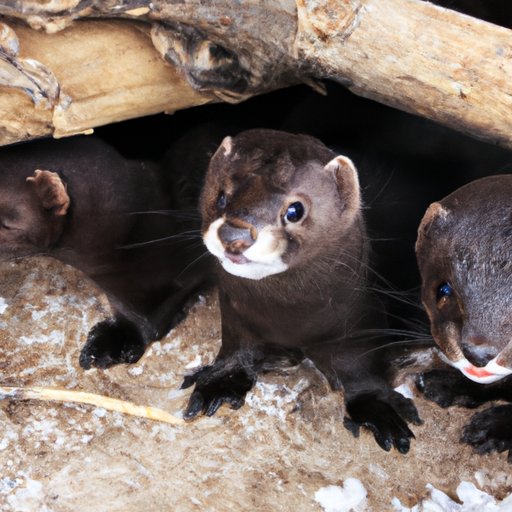Introduction
Have you ever heard of a mink? If you live near a body of water, chances are you have encountered one of these fascinating creatures before. Minks are semi-aquatic mammals known for their sleek and shiny fur. While they may seem like nothing more than a cute and cuddly animal, there are several reasons why it is important to understand what a mink is. If you have dealt with minks in the past or are considering getting one as a pet, it is essential to know everything there is to know about these animals.
Explaining What a Mink is
A mink is a small, carnivorous mammal that can be found near water sources such as rivers, ponds, and lakes. They belong to the same family as ferrets, otters, and weasels and are closely related to the European mink, which is an endangered species. Minks are characterized by their long, slender bodies, short legs, and webbed feet. They have thick, oily fur which can range in color from dark brown to black, and they have a distinctive white patch on their chins. On average, minks range in size from 12-18 inches in length and weigh between one to three pounds.
There are two types of minks: the American mink (Neovison vison) and the European mink (Mustela lutreola). The North American mink is the more common of the two and can be found throughout North and Central America, whereas the European mink is found only in Europe and is considered to be an endangered species.
Benefits of the Mink Fur Industry
The fur industry is a controversial topic, but there is no denying the economic benefits associated with raising minks for their fur. According to the Fur Information Council of America, mink farming is a $1.5 billion industry that provides jobs for thousands of people worldwide.
Aside from the economic benefits, there are also fashion and consumer benefits to the mink fur industry. Mink fur is known for its soft, luxurious texture and is often used in high-end fashion items such as coats, jackets, and hats. For those who appreciate luxury items, mink fur is a popular choice.
Minks in Captivity
Minks are often kept in captivity for a variety of reasons, including on fur farms, research facilities, and as pets. While the living conditions of minks can vary widely depending on the type of captivity, there are ethical considerations to keep in mind.
Fur farms are the most common type of captivity for minks and are often criticized for their inhumane treatment of animals. Minks on fur farms are kept in small, wire cages and are subjected to harsh living conditions. Research facilities are another type of captivity for minks, but their living conditions tend to be better than those on fur farms. As pets, minks are generally not recommended due to their wild nature and inability to be domesticated.
There are ethical dilemmas surrounding the captivity of minks and whether it is right to breed and raise them for fur and other human purposes. It is important to consider the living conditions and treatment of minks in captivity and to advocate for their humane treatment.
Minks as Predators
Minks are skilled predators in the wild and play an important role in their ecosystem. They are carnivorous and feed on a variety of prey, including fish, frogs, rodents, and birds. Minks are excellent swimmers and can take down prey both on land and in water. Hunting behaviors can vary depending on the prey, but minks are known for their agility, speed, and sharp teeth and claws.
As predators, minks are an important part of the food chain and help keep populations of their prey in check. They also play a role in scavenging and cleaning up dead animals in their environment.
Minks and their Impact on the Environment
While minks are important predators, they also have the potential to harm the environment they inhabit. Because they are not native to some areas, minks can become invasive species and disrupt the natural balance of an ecosystem. They have been known to prey on and compete with native species, especially birds and small mammals.
Minks can also be carriers of diseases that can affect other animals in their environment. They may spread diseases such as rabies, distemper, and parasites like fleas and ticks.
Mink Diseases and Health Concerns
Minks are susceptible to a variety of diseases and health concerns, both in the wild and in captivity. Some of the most common diseases include Aleutian disease, respiratory infections, and digestive problems. Symptoms can vary depending on the disease, but include lethargy, loss of appetite, and respiratory distress.
Preventive measures to keep minks healthy include regular check-ups from a veterinarian, a balanced diet, and appropriate living conditions. Vaccinations are also available to protect minks from certain diseases.
Conclusion
Understanding what a mink is and their role in their environment is essential for anyone who may come into contact with them. From their physical characteristics and hunting behaviors to their living conditions in captivity and health concerns, there is a lot to know about these fascinating creatures. Whether you are a fur farmer, researcher, or simply someone who enjoys spending time in nature, it is important to consider the impact minks can have on their surroundings and advocate for their humane treatment.
If you are experiencing problems with minks, it is important to seek out professional help, as certain steps may need to be taken to ensure the safety and well-being of both humans and animals.
